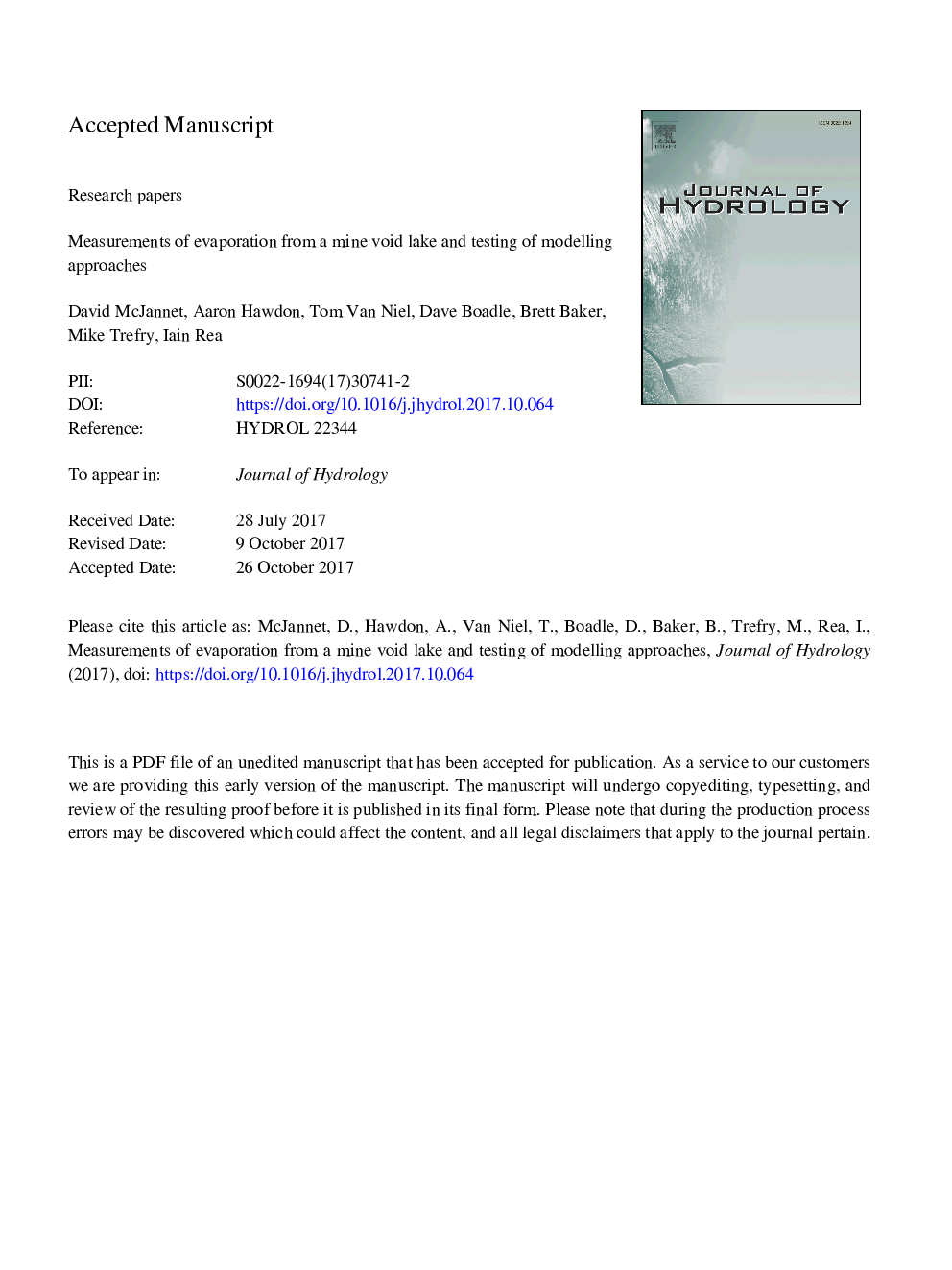| Article ID | Journal | Published Year | Pages | File Type |
|---|---|---|---|---|
| 8895283 | Journal of Hydrology | 2017 | 61 Pages |
Abstract
Pit lakes often form in the void that remains after open cut mining operations cease. As pit lakes fill, hydrological and geochemical processes interact and these need to be understood for appropriate management actions to be implemented. Evaporation is important in the evolution of pit lakes as it acts to concentrate various constituents, controls water level and changes the thermal characteristics of the water body. Despite its importance, evaporation from pit lakes is poorly understood. To address this, we used an automated floating evaporation pan and undertook measurements at a pit lake over a 12â¯month period. We also developed a new procedure for correcting floating pan evaporation estimates to lake evaporation estimates based on surface temperature differences. Total annual evaporation was 2690â¯mm and reflected the strong radiation inputs, high temperatures and low humidity experienced in this region. Measurements were used to test the performance of evaporation estimates derived using both pan coefficient and aerodynamic modelling techniques. Daily and monthly evaporation estimates were poorly reproduced using pan coefficient techniques and their use is not recommended for such environments. Aerodynamic modelling was undertaken using a range of input datasets that may be available to those who manage pit lake systems. Excellent model performance was achieved using over-water or local over-land meteorological observations, particularly when the sheltering effects of the pit were considered. Model performance was reduced when off-site data were utilised and differences between local and off-site vapor pressure and wind speed were found to be the major cause.
Keywords
Related Topics
Physical Sciences and Engineering
Earth and Planetary Sciences
Earth-Surface Processes
Authors
David McJannet, Aaron Hawdon, Tom Van Niel, Dave Boadle, Brett Baker, Mike Trefry, Iain Rea,
